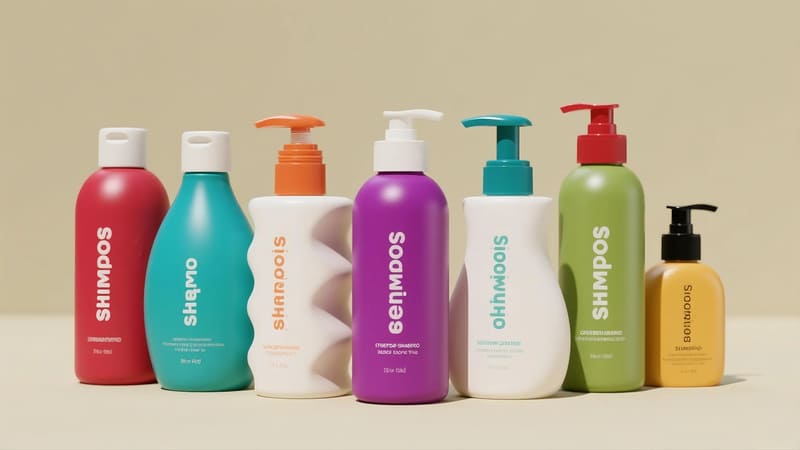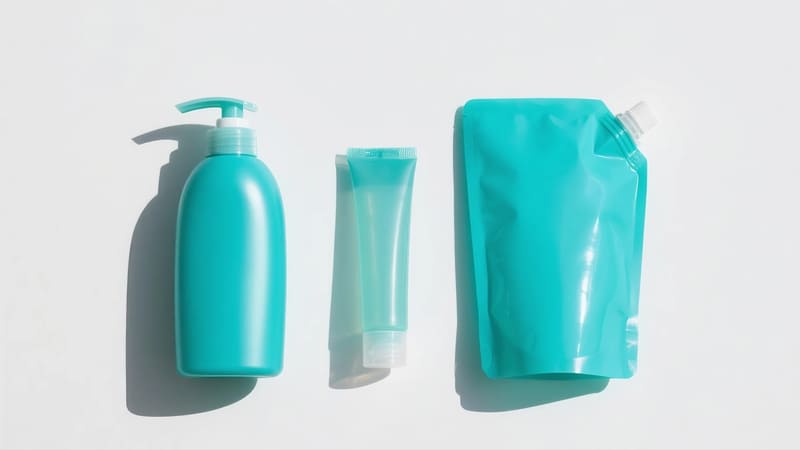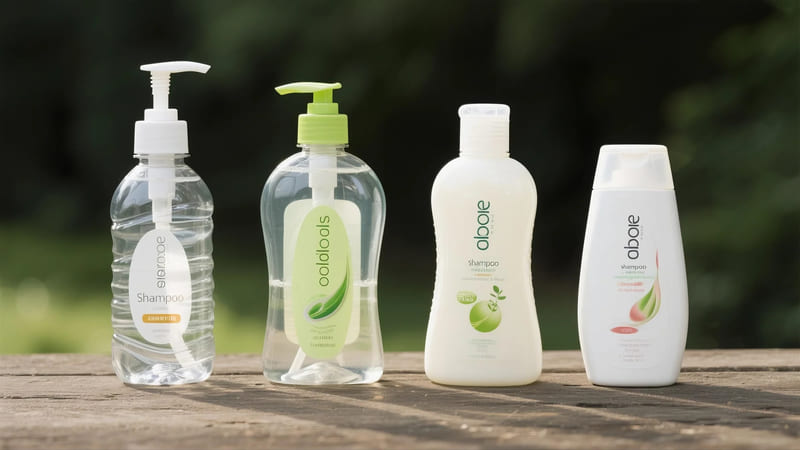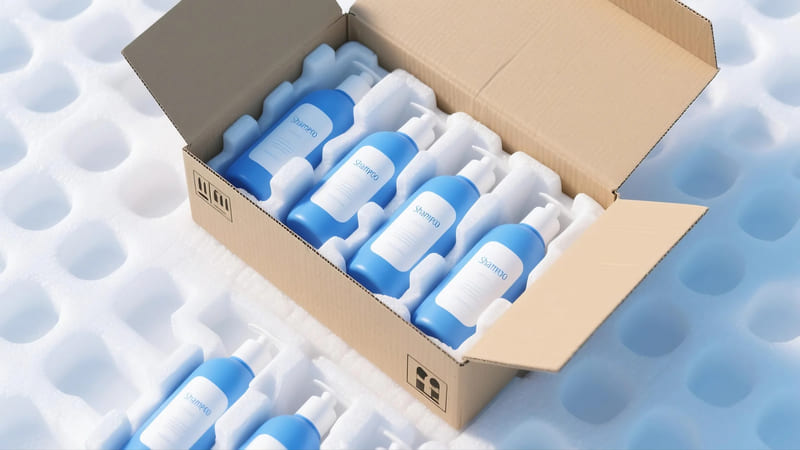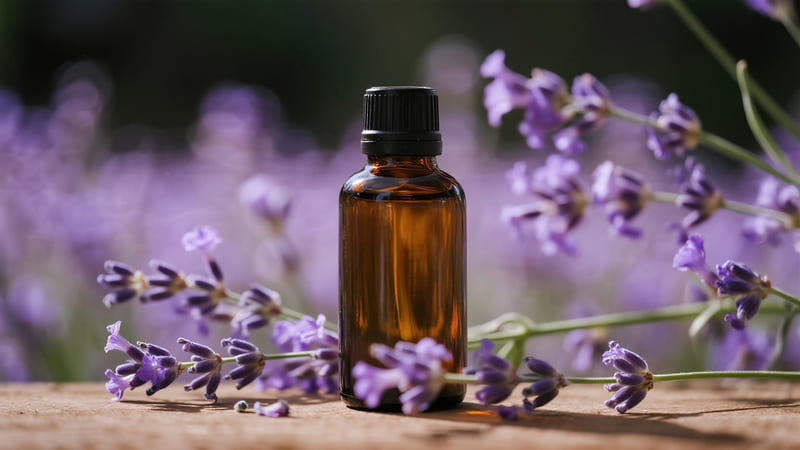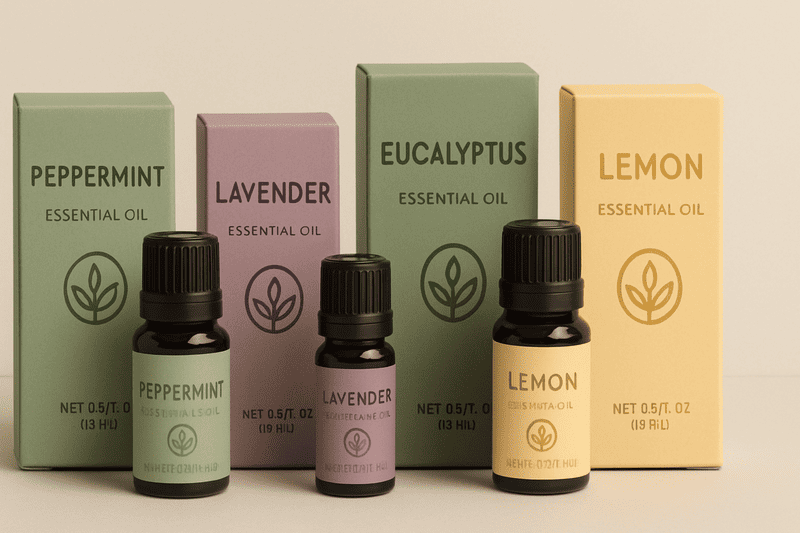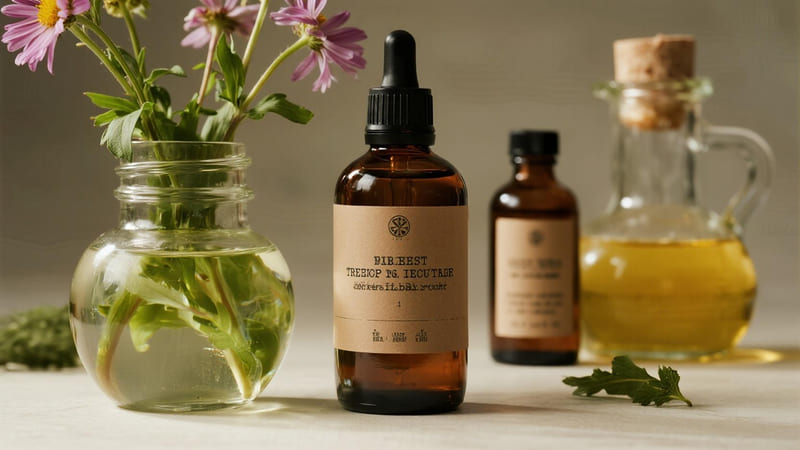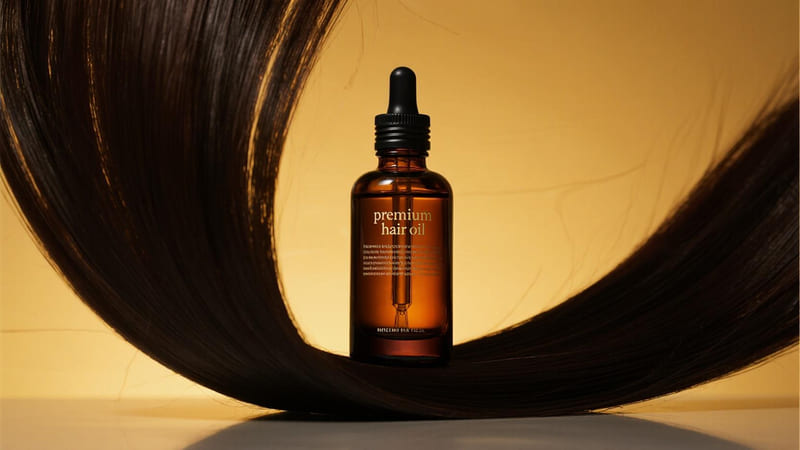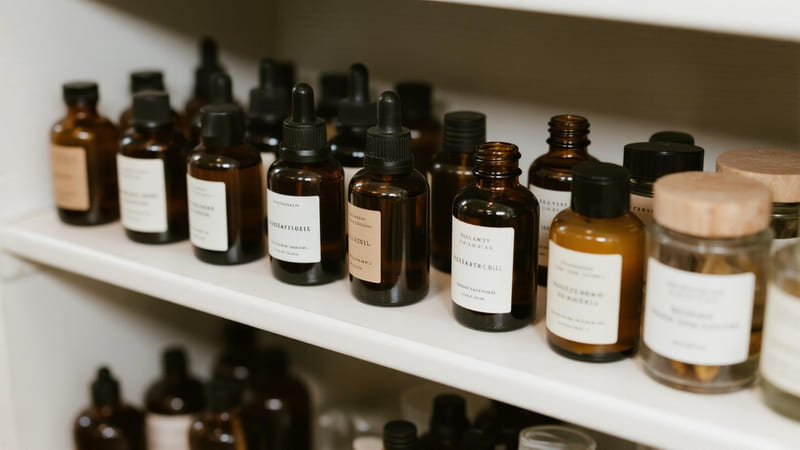When you’re creating a custom shampoo, the bottle you choose is more than just a container; it’s a key part of your brand identity, user experience, and product protection. The "right" bottle needs to be functional, aesthetically pleasing, and compatible with your unique formulation.
For custom shampoo bottles, you typically need bottles made from plastics like PET (Polyethylene Terephthalate) or HDPE (High-Density Polyethylene) due to their durability, squeezability (for some), and compatibility with most shampoo formulations. Customization options include unique shapes (requiring custom molds), colors, sizes, and various dispensing closures (pumps, disc-tops, flip-tops).
Creating custom shampoo bottles allows you to differentiate your brand in a crowded market. As a global packaging manufacturer with ShineTop for over 20 years, we’ve helped countless brands develop unique bottle designs that perfectly encapsulate their product and brand ethos. Let’s explore what goes into selecting or designing the ideal custom shampoo bottle.
What Type of Packaging is Used for Shampoo?
Shampoo, being a liquid or viscous gel, requires packaging that can effectively contain it, allow for easy dispensing, and withstand the humid bathroom environment.
The most common type of packaging used for shampoo is plastic bottles, typically made from PET or HDPE, equipped with dispensing closures like pumps, disc-top caps, or flip-top caps. Flexible plastic tubes and, increasingly, sustainable options like refill pouches or solid shampoo bars (with minimal paper packaging) are also used.
While bottles dominate, the range of shampoo packaging is evolving.
Predominant Shampoo Packaging Formats:
-
Plastic Bottles:
- Materials:
- PET (Polyethylene Terephthalate): Often chosen for its clarity (allowing product visibility), good strength, and recyclability. Can be easily colored.
- HDPE (High-Density Polyethylene): Naturally translucent or opaque, very durable, good moisture barrier, cost-effective. Common for larger volume or more budget-friendly shampoos.
- PP (Polypropylene): Sometimes used, especially for more rigid bottles or if specific chemical resistance is needed.
- Closures:
- Dispensing Pumps (Lotion Pumps): Offer controlled, easy dispensing, often seen as more premium.
- Disc-Top Caps: Press one side to reveal an orifice. Sleek look.
- Flip-Top Caps: Hinged cap that snaps open and closed. Very common.
- Screw Caps: Basic, but less convenient for in-shower use.
- Materials:
-
Plastic Squeeze Tubes:
- Materials: LDPE (Low-Density Polyethylene) or laminate materials.
- Why Used: Good for thicker shampoos or conditioners, allow for easy squeezing and controlled dispensing, often sealed at the end after filling.
- Closures: Typically flip-top or screw caps.
-
Refill Pouches:
- Materials: Flexible laminate films, often designed to be lighter weight and use less plastic than rigid bottles.
- Why Used: An increasingly popular sustainable option, allowing consumers to refill durable primary bottles.
-
Solid Shampoo Bars:
- Packaging: Require minimal packaging, often just a paper wrap, a small paperboard box, or a reusable tin. This is a rapidly growing eco-friendly segment.
-
Glass Bottles (Less Common for Shampoo):
- Why Less Common: Breakability in a wet shower environment is a major safety concern. Heavier and more expensive.
- Niche Use: Some very high-end or artisanal brands might use glass with a pump, often emphasizing luxury or extreme naturalness, but it’s not mainstream for safety reasons.
When considering "custom shampoo bottles," brands are usually looking to create unique shapes, colors, or decoration on plastic bottles, or select from a wide range of stock plastic bottles that can then be customized with labels, printing, and specific closures. ShineTop offers extensive customization in all these areas.
What is the Size of a Shampoo Bottle?
Shampoo bottles come in a vast range of sizes to cater to different consumer needs, from travel-friendly minis to salon-sized bulk containers. There’s no single "standard" size.
Shampoo bottle sizes vary widely, commonly ranging from small travel sizes (e.g., 50ml – 100ml / 1.7 – 3.4 fl oz) to standard retail sizes (e.g., 200ml – 500ml / 6.7 – 16.9 fl oz), and larger family or salon sizes (e.g., 750ml – 1000ml+ / 25 – 33.8+ fl oz). Custom sizes are also possible.
The size chosen depends on target market, product positioning, and usage patterns.
Common Shampoo Bottle Size Categories:
-
Travel/Sample Sizes:
- 50ml (approx. 1.7 fl oz)
- 75ml (approx. 2.5 fl oz)
- 100ml (approx. 3.4 fl oz – often the TSA limit for carry-on liquids)
- Purpose: Convenience for travel, product trial, inclusion in amenity kits.
-
Standard Retail Sizes (Individual/Small Family):
- 200ml (approx. 6.7 fl oz)
- 250ml (approx. 8.4 fl oz)
- 300ml (approx. 10.1 fl oz)
- 350ml – 400ml (approx. 11.8 – 13.5 fl oz)
- 500ml (approx. 16.9 fl oz)
- Purpose: Everyday use for individuals or small households. This is the most common category for custom branded bottles.
-
Value/Family Sizes:
- 750ml (approx. 25.4 fl oz)
- 1 Liter (1000ml / approx. 33.8 fl oz)
- Purpose: Offer better value per ml, suitable for families or frequent users.
-
Professional/Salon Sizes (Backbar):
- 1 Liter (1000ml) and larger (e.g., 1.5L, Gallon sizes for some professional products).
- Purpose: For use by hairstylists in salons. Often simpler packaging with a focus on functionality (e.g., large pumps).
When Ordering Custom Bottles:
When you work with a supplier like ShineTop for custom shampoo bottles, you can often specify a custom volume, or choose from a range of stock molds that come in various standard capacities. The dimensions (height, diameter/width) will be determined by the chosen volume and desired shape.
What Type of Plastic is Used for Shampoo Bottles?
The choice of plastic for shampoo bottles is driven by factors like chemical compatibility with the shampoo formula, desired aesthetics (clarity vs. opacity), squeezability, durability, cost, and recyclability.
The most common types of plastic used for shampoo bottles are PET (Polyethylene Terephthalate) for its clarity and strength, and HDPE (High-Density Polyethylene) for its durability, good moisture barrier, and cost-effectiveness. PP (Polypropylene) is also sometimes used, especially for caps or more rigid bottle requirements.
These plastics offer a good balance of properties for most shampoo formulations.
Key Plastics for Shampoo Bottles:
-
PET / PETE (Polyethylene Terephthalate – Resin Code #1):
- Appearance: Can be crystal clear (like glass), allowing the color and consistency of the shampoo to be visible. Can also be easily colored (transparent or opaque).
- Properties: Good strength and impact resistance (though can crack if dropped hard when very cold), good barrier to oxygen and moisture (helps preserve fragrance and formula), lightweight.
- Feel: Generally rigid, but can be designed for some squeezability in thinner walls.
- Recyclability: Widely recycled globally. PCR PET (Post-Consumer Recycled PET) is increasingly used for a more sustainable option.
- Common For: Many mid-range to premium retail shampoos where product visibility or a glossy, clear look is desired.
-
HDPE (High-Density Polyethylene – Resin Code #2):
- Appearance: Naturally translucent (milky white) or can be pigmented to any opaque color.
- Properties: Excellent moisture barrier, very good chemical resistance, very durable and impact resistant, more flexible and squeezable than PET (especially in thinner walls), generally more cost-effective than PET.
- Feel: Can range from fairly rigid to quite squeezable.
- Recyclability: Widely recycled globally. PCR HDPE is also common.
- Common For: Many mass-market shampoos, larger volume bottles, opaque colored bottles.
-
PP (Polypropylene – Resin Code #5):
- Appearance: Can be clear (clarified PP), translucent, or opaque.
- Properties: Good chemical resistance, higher heat tolerance than PE, good fatigue resistance (good for hinged flip-top caps). More rigid than HDPE or LDPE.
- Recyclability: Recyclable, though acceptance in curbside programs can vary more than PET or HDPE in some regions. PCR PP is available.
- Common For: Often used for shampoo bottle caps and closures. Sometimes for the bottle itself if a more rigid structure or specific aesthetic (like clarified PP) is desired.
Less Common for Shampoo Bottles (but may be used for related packaging):
- LDPE (Low-Density Polyethylene – #4): Very flexible, typically used for squeeze tubes rather than bottles.
- PVC (Polyvinyl Chloride – #3): Rarely used for shampoo bottles now due to environmental concerns and availability of better alternatives.
When Anna, a cosmetics client of ShineTop in Thailand, developed her natural shampoo line, she chose PCR PET bottles for their clarity (to show the natural product) and their improved sustainability profile. We helped her source bottles with a high percentage of recycled content.
How Do You Pack Shampoo Bottles for Shipping?
Properly packing shampoo bottles for shipping is crucial to prevent leaks, breakage (if applicable, though less common with plastic), and damage to labels or outer packaging, ensuring they arrive at their destination in perfect condition.
To pack shampoo bottles for shipping: 1. Ensure caps are tightly secured (tape down pumps or flip-tops if prone to opening). 2. Individually wrap bottles if they are not in retail boxes, or use dividers if they are. 3. Place them in a sturdy shipping carton with cushioning at the bottom. 4. Fill all void spaces with cushioning material to prevent movement. 5. Add top cushioning and seal the carton securely.
Whether you’re shipping to a distribution center, a retailer, or directly to consumers, secure packing is essential.
Steps for Safe Shampoo Bottle Shipping:
-
Prepare Individual Bottles:
- Tighten Caps: Ensure all caps (screw caps, pumps, flip-tops, disc-tops) are fully tightened.
- Secure Pumps/Flip-Tops: For pumps, either use a pump lock (if it has one) or tape the pump head down to the neck of the bottle to prevent accidental dispensing. Similarly, tape down flip-top or disc-top caps.
- Seal (Optional): For extra protection against leaks, especially with screw caps, you can place a small piece of plastic wrap over the bottle opening before screwing on the cap, or use an induction seal liner if your filling process allows.
-
Individual Protection / Grouping:
- If Bottles Have Retail Boxes: The box provides some protection. Ensure bottles fit snugly. You can then group these boxes in the shipping carton, often using cardboard dividers.
- If Bottles are Unboxed:
- Individually wrap each bottle in bubble wrap or a foam sleeve.
- Alternatively, place each bottle in a sealed plastic bag to contain any potential minor leaks.
-
Choose a Sturdy Shipping Carton:
- Use a new or like-new corrugated cardboard box of appropriate strength for the total weight of the shipment. Double-walled boxes are better for heavier loads.
-
Cushion the Carton:
- Line the bottom of the shipping carton with at least 2 inches of cushioning material (e.g., bubble wrap, packing peanuts, foam sheets, crinkle paper).
-
Arrange Bottles in Carton:
- Place bottles upright.
- Use cardboard dividers between bottles or boxed products to prevent them from rubbing or crushing each other.
- Distribute weight evenly. Avoid overcrowding.
-
Fill All Void Spaces:
- This is critical. Use ample void fill material (packing peanuts, air pillows, crumpled paper, bubble wrap) to fill every empty space around, between, and on top of the bottles. The contents should not be able to shift at all when the box is gently shaken.
-
Top Cushioning & Sealing:
- Add a final layer of cushioning on top of the products before closing the flaps.
- Seal the box securely with strong packing tape (at least 2 inches wide), using the H-tape method (taping all seams and edges).
-
Labeling:
- Clear shipping labels.
- While "Fragile" labels can be used, proper internal packing is more important than relying on handlers to be gentle. "This Way Up" arrows can be helpful.
When ShineTop ships bulk orders of empty custom shampoo bottles to our clients, we use robust export-grade cartons with internal dividers or layered packing to ensure they arrive ready for filling, without scuffs or damage. The same care is needed when shipping the filled products.
Conclusion
Choosing or designing the "bottle needed for custom shampoo bottles" involves selecting the right plastic (typically PET or HDPE, often with PCR content for sustainability), an appropriate size for your target market, and a functional, brand-aligned dispensing closure. Whether you source stock bottles and customize them with labels and caps, or work with a manufacturer like ShineTop to create a completely unique mold and decoration, the goal is a bottle that protects your shampoo, looks great on the shelf, and provides an excellent user experience. Careful packing for shipping then ensures your beautifully bottled product reaches its destination safely.

